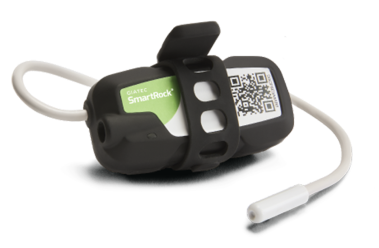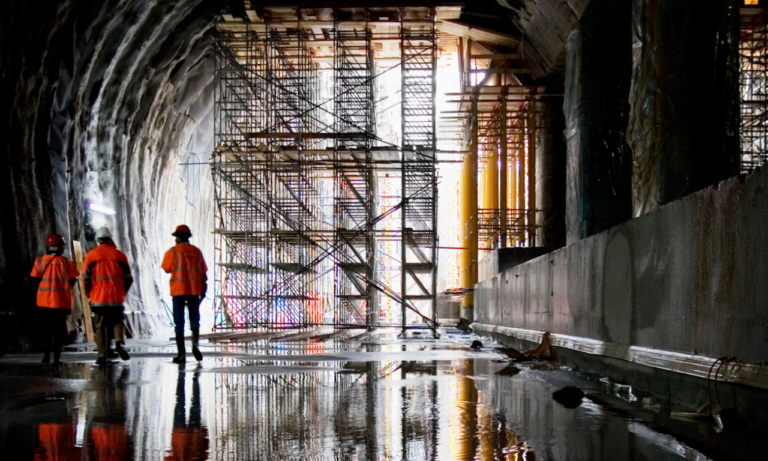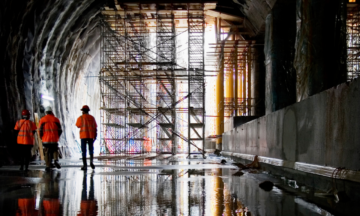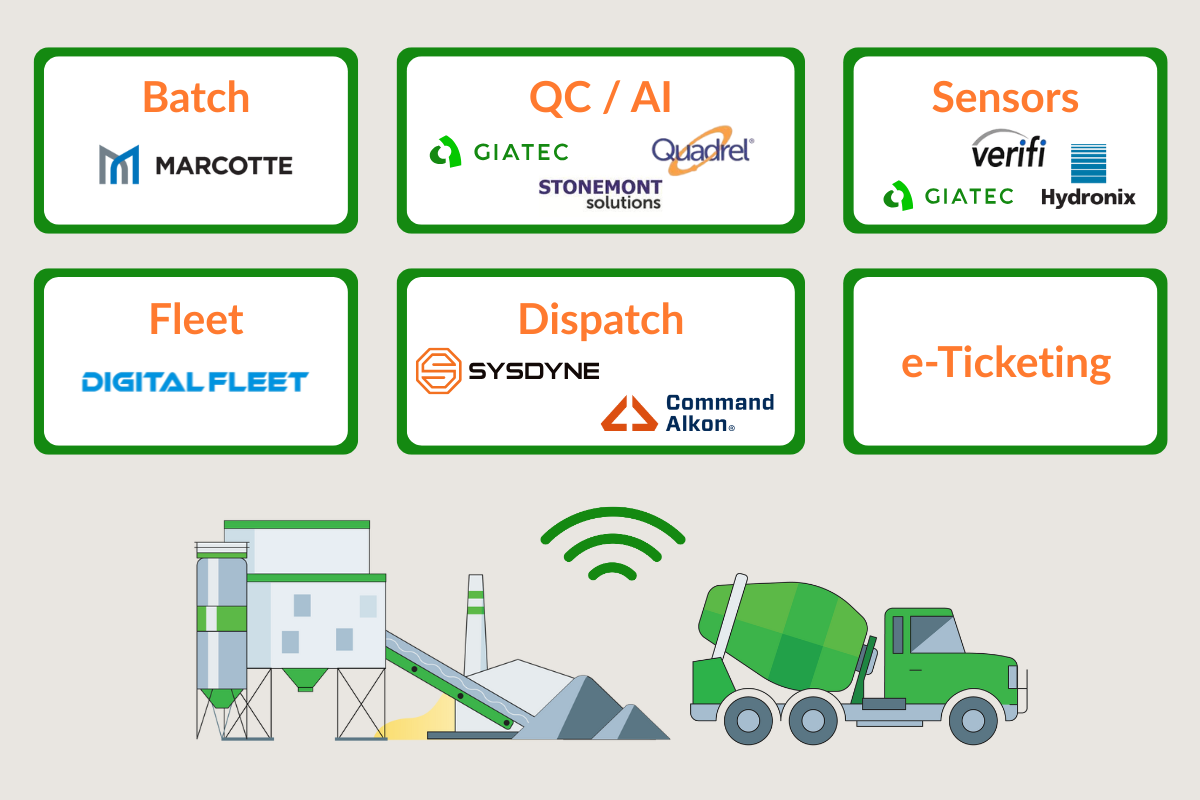Pouring concrete in the rain is a common challenge in construction, especially in regions where unexpected weather patterns can disrupt project schedules. While it’s often possible to pour concrete in wet conditions, certain precautions are essential to ensure the durability and integrity of the structure. Rain can impact concrete’s quality, leading to potential delays and cost overruns, but with proper planning, and sound management practices, these challenges can be minimized.
Explore 12 Futuristic Technology Trends Solving Concrete's Biggest Challenges.
Challenges of Pouring Concrete in the Rain
Rainfall during a concrete pour can introduce several issues, including:
- Weak Surface: Excess water on freshly poured concrete can dilute the cement paste on the surface, leading to a weak, powdery layer. This compromises the surface durability and aesthetic quality of the finish.
- Inconsistent Water-to-Cement Ratio: Concrete needs a precise water-to-cement ratio for optimal strength and durability. Rainwater can alter this ratio, increasing the likelihood of cracks, reduced strength, and diminished structural integrity.
- Cracking and Scaling: Rapid drying after rain can cause cracking, and, if it occurs in colder climates, rain-soaked concrete is at risk for scaling due to freeze-thaw cycles.
Given these potential pitfalls, construction managers must exercise caution when planning and executing concrete pours in rainy weather. Fortunately, modern technology, such as Giatec’s SmartRock® sensors, allows project managers to monitor concrete’s performance in real-time, even in unpredictable weather.
Preparing for a Rainy Pour: Strategies for Project Managers
Effective planning is critical to minimizing the risks associated with pouring concrete in rainy weather. Here are some strategies project managers can employ:
1. Monitor Weather Forecasts Closely
Using accurate weather prediction tools, project managers can anticipate potential rain and make necessary adjustments to the project timeline. Ideally, a forecast of 24-48 hours without rain is optimal for concrete pouring, giving the concrete sufficient time to set before exposure to rain
2. Have Protective Materials Ready
Plastic sheeting, tarps, and waterproof covers are crucial for protecting freshly poured concrete from rain. Teams should be ready to deploy these materials at a moment’s notice. When it’s clear that rain is imminent, they can be placed over the area to prevent excess water from diluting the surface.
3. Adjust the Concrete Mix
For planned pours during wet weather, modifying the concrete mix can enhance durability. Reducing the water content or adding admixtures to accelerate the setting time can help offset the impact of rain. This ensures that the concrete remains resilient, even in damp conditions.
4. Use Advanced Curing Techniques
Project managers might use specific curing compounds to expedite the curing process. Curing blankets can also be useful, especially in cooler, rainy weather, to retain heat and moisture control.
Mitigating Rain Risks With SmartRock Sensors
Giatec’s SmartRock sensors play a crucial role in ensuring concrete quality and strength. This is especially important when dealing with the added variable of rain. These wireless sensors, embedded directly within the concrete, provide real-time data on temperature and strength development. This helps project managers make informed decisions during adverse weather conditions.

How SmartRock Sensors Work
SmartRock sensors are attached to the rebar and embedded in the concrete mix. They provide continuous data on temperature and maturity (a function of time and temperature). This allows for precise monitoring of concrete strength development. The data is accessible via a mobile app, giving managers and engineers real-time insights, even on-site in challenging weather conditions.
Key Benefits of SmartRock in Rainy Weather
- Accurate Strength Monitoring: By tracking the concrete’s maturity, SmartRock sensors help teams determine the optimal time for formwork removal, reducing the risk of premature stripping
- Temperature Control: Temperature fluctuations can impact concrete strength. In rain, concrete can cool quickly, slowing the curing process. SmartRock sensors provide temperature data, enabling adjustments in curing techniques and helping teams achieve the desired strength in a predictable time frame.
- Reduction in Over-Budgeting and Delays: With real-time data from SmartRock, project managers can minimize downtime caused by weather, as they no longer have to rely on manual testing. This saves time and keeps the project on track, reducing the costs associated with delays and re-pours.
FAQs About Pouring Concrete in Rainy Weather
1. Can I pour concrete in light rain?
Yes, concrete can often be poured in light rain if protective measures, like using tarps or plastic sheets, are in place to shield the surface from direct exposure. However, monitoring the forecast is crucial, and it’s recommended to avoid pouring in heavy rain if possible.
2. How long should concrete be set before rain exposure?
Ideally, concrete should be set for 4-6 hours before any rain exposure. However, this can vary depending on the mix and environmental conditions. Using tools like SmartRock sensors can provide precise insights into when the concrete has reached adequate strength.
3. What is the risk of rain diluting the concrete mix?
Rain can increase the water content in the concrete, which can weaken the mix and alter the water-to-cement ratio, leading to reduced strength and durability. Taking protective measures and modifying the mix are keyways to mitigate this risk.
4. How do SmartRock sensors help in cold, rainy weather?
Cold temperatures can slow down concrete curing. SmartRock sensors monitor temperature and maturity, helping project managers adjust curing methods to ensure the concrete reaches the desired strength, even in damp, cool conditions.
5. Can rain cause concrete cracking?
Yes, rain exposure, particularly if followed by rapid drying, can lead to cracking on the surface.
With real-time alerts and notifications, using SmartRock sensors allows project managers to monitor curing and make necessary adjustments to reduce cracking risk in large-scale projects.
Final Thoughts
While rain presents challenges for concrete pouring, advanced technology and effective planning can help teams manage these hurdles efficiently. Giatec’s SmartRock sensors empower project managers with real-time insights into the condition of poured concrete, allowing them to adapt to unexpected rain with minimal disruption. With proper preparation, strategic use of technology, and careful monitoring, concrete can be poured successfully in the rain, ensuring project continuity and structural resilience.
Download our free quality control checklist to never miss a step in your pours!










